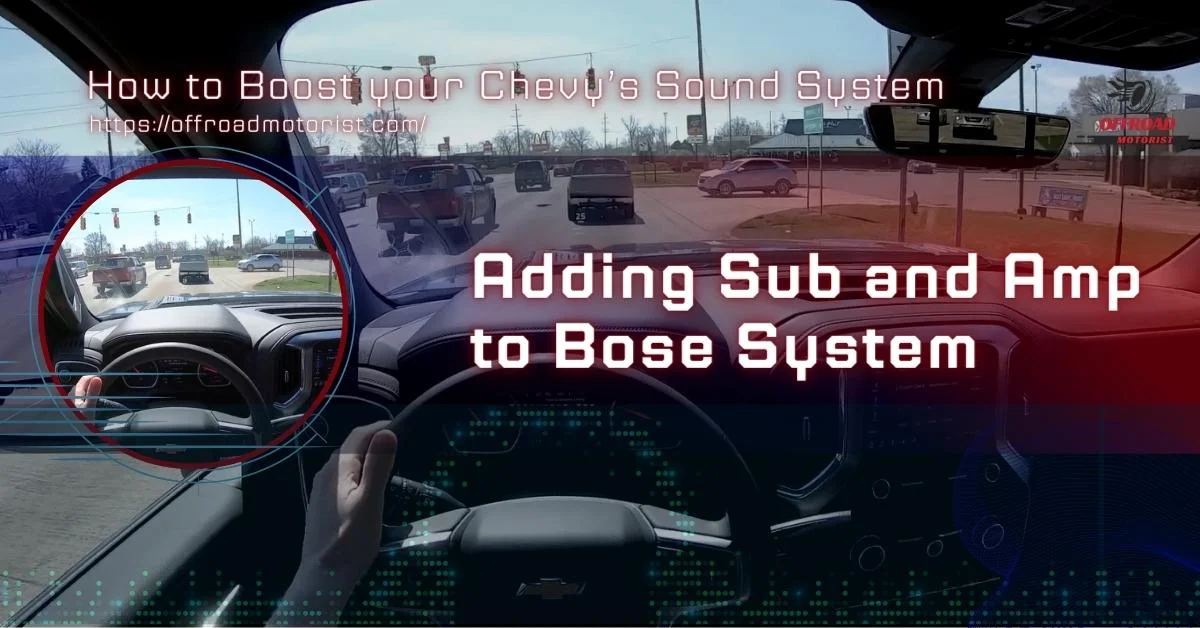What if Your Chevy Truck Wont Shift Out of Second Gear?
What if your Chevy Truck wont shift out of second gear? One of the most frustrating and concerning issues is when the Chevy truck stuck in second gear. This problem can occur out of nowhere, leaving you stranded and unable to move forward.
Not only is it a hassle, but it can also lead to further transmission damage if not addressed quickly. In this blog post, we’ll delve into the causes of second gear sticking and provide practical troubleshooting and repair solutions.
From simple DIY fixes to professional repair options, we’ll give you the knowledge you need to get your Chevy truck back on the road and running smoothly. Don’t let a stuck second gear ruin your day; let’s get started!
Most Common Causes of chevy truck’s Second Gear Sticking
Second gear sticking in Chevy trucks can be a variety of causes. The four most common causes are:
Worn synchronizers:
Worn synchronizers are Chevy trucks’ most common causes of second gear sticking. Synchronizers, also known as synchros, are responsible for smoothly shifting gears by matching the speed of the gears before they engage.
They work by using a cone-shaped mechanism that helps to bring the gears up to speed before they mesh together.
When synchronizers become worn, they can no longer effectively match the speed of the gears, which can cause gears to stick or not engage properly.
This can cause the transmission to become stuck in one gear or make it difficult to shift into another gear. Worn synchronizers can be caused by a lack of regular maintenance, driving in harsh conditions, or high mileage.
Low transmission fluid:
Low transmission fluid is another common cause of second gear sticking in Chevy trucks. Transmission fluid is responsible for lubricating the gears and other transmission components, which helps prevent friction and wear. It also helps to keep the transmission cool and clean.
When the transmission fluid level is low, it can cause the gears to become damaged by friction and heat. This can cause the gears to stick or not shift properly.
Sometimes, it can damage other transmission components, such as the torque converter or bearings. Low transmission fluid can be caused by various factors, such as leaks, worn seals, or lack of regular maintenance.
It is important to check the transmission fluid level regularly and top it off as needed. If the transmission fluid is dirty or smells burnt, it may need to be drained and replaced.
Electrical issues:
Electrical issues can also cause the second gear to stick in Chevy trucks. The transmission control module (TCM) is an electronic control unit that manages the transmission’s shifting patterns and gear selection.
It receives input signals from various sensors, such as the engine speed sensor, and then sends output signals to the solenoids to control the flow of transmission fluid and engage the gears.
When there are electrical issues with the TCM, it can cause problems with the transmission’s shifting patterns. This can cause the transmission to become stuck in one gear or make it difficult to shift into another gear.
Common symptoms of electrical issues with the TCM include trouble shifting gears, gears slipping, or gears not engaging at all. Various factors, such as a malfunctioning sensor, a damaged wiring harness, or a blown fuse, can cause electrical issues.
Malfunctioning Transmission control module:
A malfunctioning transmission control module (TCM) can also cause the second gear to stick in Chevy trucks. The TCM is an electronic control unit that manages the transmission’s shifting patterns and gear selection.
It receives input signals from various sensors, such as the engine speed sensor, and then sends output signals to the solenoids to control the flow of transmission fluid and engage the gears.
When the TCM malfunctions, it can cause problems with the transmission’s shifting patterns. This can cause the transmission to become stuck in one gear or make it difficult to shift into another gear.
Common symptoms of a malfunctioning TCM include trouble shifting gears, gears slipping, or gears not engaging at all. A damaged wiring harness, a blown fuse, or a software malfunction can cause a malfunctioning TCM.
DIY Troubleshooting Steps for Chevy Truck Won’t Shift Out of Second Gear
When troubleshooting second gear sticking in Chevy trucks, there are a few basic steps you can take to diagnose the problem. Here are some DIY troubleshooting steps you can try:
I. Check the transmission fluid level:
The first step is to check the transmission fluid level. Ensure it is at the correct level and is not dirty or burnt-smelling. If the transmission fluid level is low, top it off and see if that resolves the issue.
If the transmission fluid is dirty or smells burnt, it may need to be drained and replaced. Here is a general overview of the steps involved in replacing the transmission fluid in a vehicle:
- Gather the necessary tools and supplies:
You will need new transmission fluid (use the correct type of transmission fluid, which can be found in the owner’s manual), a transmission fluid pump, a funnel, and a drain pan.
In some vehicles, the transmission fluid is refilled through a pump or machine during a transmission fluid exchange service.
This service involves removing the old fluid from the transmission and replacing it with new fluid, which is more effective in maintaining the transmission’s health than just refilling it.
- Locate the transmission fluid dipstick and drain plug:
The transmission fluid dipstick is located on the driver’s side of the vehicle, near the back of the engine. You can usually find it by following the transmission fluid lines from the transmission to the engine.
We recommend checking your Chevy Truck’s owner manual for the specific location of the transmission fluid dipstick. The owner’s manual should have a diagram of the engine compartment, which will show the location of the dipstick.
After locating the transmission fluid dipstick and drain plug, the dipstick is used to check the level of the transmission fluid, and the drain plug is used to drain the old fluid.
- Park the vehicle on a level surface and engage the emergency brake:
It is important to park the vehicle on a level surface and engage the emergency brake when replacing the transmission fluid because it will ensure that the vehicle stays level and secure while working on it.
- Drain the old fluid:
Remove the drain plug from the transmission pan and allow the old fluid to drain into the drain pan. Be sure to have the drain pan under the transmission pan.
- Replace the drain plug and refill the transmission with new fluid:
Once the old fluid has been drained, replace the drain plug and refill the transmission with the new fluid, using a funnel to pour the fluid into the transmission fluid dipstick tube.
The amount of transmission fluid needed to refill will vary depending on the make and model of your vehicle. Most vehicles will generally require between 4-8 quarts of transmission fluid. Some vehicles may need more or less depending on the transmission size.
- Check the fluid level:
Once the new fluid has been added, check the fluid level with the dipstick to ensure it is at the correct level. Overfilling or underfilling the transmission fluid can cause damage to the transmission; it’s always best to follow the manufacturer’s recommendations.
It is important to note that this is a general overview, and the steps may vary depending on the make and model of your vehicle. It’s always best to refer to the vehicle’s owner’s manual or consult a professional mechanic for instructions on replacing the transmission fluid.
II. Inspect the linkage:
Inspecting the linkage that connects the gear shifter to the transmission is important when troubleshooting second gear sticking in Chevy trucks. Here’s a general overview of how to inspect the linkage:
- Locate the linkage:
The linkage is typically located near the transmission and connects the gear shifter to the transmission. The linkage is typically a metal rod or cable that runs from the gear shifter to the transmission.
- Check for looseness or damage:
Check the linkage for any signs of looseness or damage. Ensure all the connections are tight and the linkage is not bent or damaged.
- Check for proper movement:
Check the movement of the linkage. Make sure it moves smoothly, and there is no binding or resistance when moving the gear shifter. If you notice any problems with the linkage, it may need to be adjusted or replaced.
- Check the bushings:
Inspect the bushings that the linkage passes through. Look for any signs of wear, tear, or damage. If the bushings are worn or damaged, it can cause the linkage to bind or not move smoothly.
- Check for any leaks:
Make sure there are no leaks around the linkage. If you find leaks, it is important to repair them as soon as possible to avoid further damage.
Inspecting the linkage is a basic troubleshooting step, and in many cases, the issue may be more complex and require professional help. It’s recommended to seek professional help from a transmission specialist or a qualified mechanic.
III. Check for leaks:
When troubleshooting second gear sticking in Chevy trucks, leaks can cause damage to the transmission and lead to other problems. Here’s a general overview of how to check for leaks:
- Look for visible signs of leaks:
Check the area around the transmission and gear shifter for visible signs of leaks, such as transmission fluid stains on the ground or the exterior of the transmission.
- Check for any unusual noises:
Listen for any unusual noises from the transmission, such as whining or humming sounds. These sounds can indicate a leak.
- Inspect the transmission pan:
As the pan can provide important information about the condition of the transmission, inspect the transmission pan for any signs of leaks. If the pan is dirty or has an unusual smell, it may indicate a leak.
- Use a UV dye:
UV dye is a useful method for detecting leaks in a Chevy truck’s transmission system. The dye is added to the transmission fluid, and a UV light is used to detect leaks.
- Check the hoses:
Check the hoses, fittings, and other parts: Check the hoses, fittings, and other parts of the transmission for any signs of leaks.
Repair any leaks as soon as possible to avoid further damage to the transmission. If you cannot find the leak’s source or it’s difficult to fix, it’s recommended to seek professional help from a transmission specialist or a qualified mechanic.
Also, it’s always best to refer to the vehicle’s owner manual for specific instructions on how to check for leaks, as the process may vary depending on the make and model of your Chevy truck.
IV. Check the transmission control module:
If the above steps do not resolve the issue, it may be an electrical problem related to the transmission control module. A malfunctioning TCM can cause problems with the transmission’s shifting patterns.
Here’s a general overview of how to check the TCM:
- Check the TCM’s connections:
Inspect the TCM’s connections and make sure they are securely connected and not corroded or damaged. The TCM is typically located in the engine bay near the transmission. Once you have located the TCM, follow these steps:
- Look at the connectors on the TCM and ensure they are securely attached and not corroded or damaged. Make sure they are not loose or disconnected.
- Inspect the terminals on the connectors and ensure they are not bent, corroded, or damaged.
- Inspect the wiring that connects the TCM to the rest of the vehicle’s electrical system, and ensure that it is not damaged or frayed.
- Check the ground connection and make sure it is properly grounded.
If you find any issues with the TCM’s connections or wiring, it’s best to have a professional mechanic fix them as soon as possible to prevent further damage.
- Check the TCM’s power supply:
Check the TCM’s power supply and make sure it is receiving power. To check the power supply of the Transmission Control Module (TCM) on a Chevy truck, follow these steps:
- The vehicle’s battery powers the TCM, so locate the battery and the positive and negative terminals.
- Using a digital multimeter, check the battery’s voltage to ensure it is at least 12.5 volts.
- Locate the fuses related to the TCM and check them to ensure they are not blown.
- Locate the relays related to the TCM and check them to ensure they are not malfunctioning.
- Inspect the wiring that connects the TCM to the power supply and ensure that it is not damaged or corroded.
If you find any issues with the TCM’s power supply, such as a low voltage or a blown fuse, or a malfunctioning relay, it’s best to have a professional mechanic fix them as soon as possible.
- Check the TCM’s ground:
Check the TCM’s ground and make sure it is properly grounded. Follow these steps to check the ground of the Transmission Control Module (TCM) on a Chevy truck:
- Using a digital multimeter, check the connection between the TCM and the ground point. You should see a low reading, typically less than 0.5 ohms, indicating a good ground connection.
- Inspect the ground wire that connects the TCM to the ground point, and ensure that it is not damaged or corroded.
- Make sure the metal surface is clean and rust-free.
If you find any issues with the TCM’s ground connection, such as high resistance, a damaged wire, or a corroded metal surface, fix them as soon as possible to prevent further damage.
- Check the TCM’s wiring:
The TCM wiring harness connects the TCM to the vehicle’s electrical system. It typically includes several wires and connectors. To check the wiring of the Transmission Control Module (TCM) on a Chevy truck, follow these steps:
- Inspect the connectors that connect the TCM to the wiring harness and ensure that they are properly seated and not corroded.
- Inspect the wiring that runs from the TCM to the vehicle’s electrical system and ensure that it is not damaged or corroded.
- Locate the fuses related to the TCM and check them to ensure they are not blown.
- Locate the relays related to the TCM and check them to ensure they are not malfunctioning.
- Check for any loose or corroded terminals.
Suppose you find any issues with the TCM’s wiring, such as a corroded connector or a damaged wire, a blown fuse, or a malfunctioning relay. In that case, it’s best to have a professional mechanic fix it to prevent further damage.
- Perform a scan & Check for Trouble Codes:
Perform a scan of the vehicle’s computer system using a diagnostic scanner. This will provide information about any trouble codes stored in the TCM.
To perform a scan of the Transmission Control Module (TCM) on a Chevy truck, you will need to use a diagnostic scanner. Here are the steps to perform a scan:
Here are the steps to performing & checking the trouble codes:
- Connect the diagnostic scanner to the vehicle’s diagnostic port, which is typically located under the dashboard on the driver’s side.
- Turn the ignition key to the “On” position but do not start the engine.
- Follow the prompts on the scanner to perform a diagnostic scan of the TCM and related systems.
- The scanner will retrieve any diagnostic trouble codes (DTCs) that may indicate a problem with the TCM or related systems.
- Check the codes against the vehicle’s service manual or online resources to determine the cause of the problem.
- Once the issue is resolved, clear the codes from the scanner to prevent the check engine light from coming back on.
Not all issues will set off a diagnostic trouble code, so even if the scan comes back with no codes, it doesn’t mean there’s no problem. Sometimes, a qualified mechanic may need to perform additional tests to diagnose the problem.
- Check the TCM’s software:
Check the TCM’s software and make sure it is up to date. To check the Transmission Control Module’s (TCM) software, you will need to use a diagnostic scanner capable of reading and updating the software.
Here are the steps to check the TCM’s software:
- Connect the diagnostic scanner to the vehicle’s diagnostic port, which is typically located under the dashboard on the driver’s side.
- Turn the ignition key to the “On” position but do not start the engine.
- Follow the prompts on the scanner to perform a diagnostic scan of the TCM and related systems.
- The scanner will display the current software version of the TCM.
- Compare the current software version to the latest version available from the manufacturer. If the version is outdated, TCM’s software may need to be updated.
- If an update is necessary, follow the prompts on the scanner to update the TCM’s software.
Software updates for the TCM require a specialized technician and equipment, and it’s best to refer to the vehicle’s owner manual for specific instructions.
- Check the TCM’s settings:
Check the TCM’s settings and make sure they are properly configured. To check the Transmission Control Module’s (TCM) settings, you will need to use a diagnostic scanner capable of reading and adjusting the TCM’s parameters.
Note: Checking the TCM’s setting is the same process as Checking TCM’s Software. Follow the prompts on the scanner to Check & update the TCM’s settings.
Checking the TCM is a basic troubleshooting step, and in many cases, the issue may be more complex and require professional help. If you cannot resolve the problem with this step or you suspect a more serious issue, it’s recommended to seek professional help.
It’s always best to refer to the vehicle’s owner manual for specific instructions on how to check the transmission fluid level, inspect the linkage and troubleshoot the transmission control module.
Professional Repair Options for chevy truck second gear shift out issue
When resolving second gear sticking in Chevy trucks, professional repair is necessary if the problem cannot be resolved through DIY troubleshooting.
Here are a few common professional repair options:
01. Replacing worn parts:
If worn synchronizers or other parts cause the problem, a transmission specialist can replace them to restore proper shifting. This option is typically less expensive than a full transmission rebuild.
02. Rebuilding the transmission:
In some cases, the problem may be more extensive, and a full transmission rebuild may be necessary. This option involves completely disassembling the transmission, inspecting and replacing any worn or damaged parts, and reassembling the transmission.
This is more expensive but can restore the transmission to like-new condition.
03. Fluid and filter replacement:
A transmission fluid and filter replacement may solve the issue; this is a less invasive option than a rebuild. Still, it can also have a significant impact on transmission performance.
When considering professional repair options, it’s important to remember that the cost can vary depending on the specific problem and the type of repair needed.
It’s always best to get a professional diagnostic from a transmission specialist or a qualified mechanic to know the extent of the problem and the best option to fix it.
Preventative Maintenance for chevy truck second gear shift out issue
Preventative maintenance is key to preventing second gear sticking and other transmission problems in Chevy trucks. Regularly maintaining your vehicle can catch small issues before they become bigger problems.
Here are a few tips on how to maintain your transmission and other key components:
01. Check and maintain transmission fluid:
One of the most important steps in preventative maintenance is checking and maintaining the transmission fluid. This includes checking the fluid level, color, and smell.
If the fluid is dirty, burnt-smelling, or low, it should be drained and replaced following the instruction mentioned above or consulting a professional.
02. Regularly inspect the linkage:
Inspecting the linkage that connects the gear shifter to the transmission is another important step in preventative maintenance. Make sure it is properly connected and not loose or damaged.
03. Check for leaks:
Look for any signs of leaks, such as transmission fluid stains on the ground. If you find leaks, it is important to repair them as soon as possible to avoid further damage.
04. Follow the recommended transmission service intervals:
The vehicle’s owner manual will have recommended service intervals for the transmission. Following them is important to keep the transmission in good working condition.
05. Check the transmission control module:
Regularly check the TCM’s connections, power supply, ground, wiring, and settings, and perform a scan and check the trouble codes; if the TCM is malfunctioning, it can cause problems with the transmission’s shifting patterns.
Following these tips and performing regular preventative maintenance can help prevent second gear sticking and other transmission problems in Chevy trucks.
FAQs
In this FAQ, we’ll explore some of the most commonly asked questions about this issue and provide helpful answers to help you understand and resolve the problem.
How can I tell if it’s a transmission problem?
Transmission problems can manifest in various ways, including difficulty shifting gears, slipping gears, or grinding noises when shifting. A qualified mechanic will be able to diagnose the issue.
Is it safe to drive my truck if it won’t shift out of second gear?
It is generally unsafe to drive a vehicle with a transmission problem, as it can cause further damage to the transmission and potentially lead to a breakdown.
How long will it take to repair the problem?
The time it takes to repair a transmission problem can vary depending on the issue’s severity and the parts’ availability. A qualified mechanic should be able to give you an estimate of the repair time.
Can the problem relate to a recent oil or transmission fluid change?
The problem could be related to a recent oil change or transmission fluid change if the oil or fluid was not changed properly or if the wrong type of fluid was used.
Are there any warning signs that my Chevy truck’s transmission is going bad?
Warning signs of a transmission problem include difficulty shifting gears, slipping gears, grinding noises when shifting, and fluid leaks.
How often should I have my transmission checked?
It is recommended to have your transmission checked at least every 30,000 miles or as recommended in your vehicle’s owner’s manual.
What is a diagnostic scanner?
A diagnostic scanner is a tool that can communicate with the vehicle’s onboard computer and retrieve diagnostic trouble codes (DTCs) that may indicate a problem with the TCM or related systems.
Final Thoughts
Second gear sticking in Chevy trucks is a common problem. The important thing is to address the issue quickly to prevent further damage.
DIY troubleshooting steps such as checking transmission fluid levels, inspecting the linkage, checking for leaks, and checking the transmission control module can help diagnose the problem.
It is important to address second gear sticking in Chevy trucks quickly, and regular preventative maintenance can help prevent this issue from occurring in the first place.
If you are still facing problems with your chevy’s Gear Shifting, You can read our article on “Why Your Chevy Truck Won’t Go Into Gear? Diagnosing And Fixing Transmission Issues” Click here.

![Chevy Silverado Not Shifting Gears? Let’s Solve The Problem Together [05 Easy Steps] chevy silverado not shifting gears.jpg](https://offroadmotorist.com/wp-content/uploads/2023/01/chevy-silverado-not-shifting-gears-150x150.jpg)


![Chevy Truck Wont Go into Park and How to Fix It [A Complete Guide] chevy truck wont go into park](https://offroadmotorist.com/wp-content/uploads/2023/02/chevy-truck-wont-go-into-park-150x150.jpg)

![Let's Get You On The Road / Chevrolet Silverado Shift Cable Problems [Solved] silverado shift cable problems](https://offroadmotorist.com/wp-content/uploads/2023/01/silverado-shift-cable-problems-150x150.jpg)





